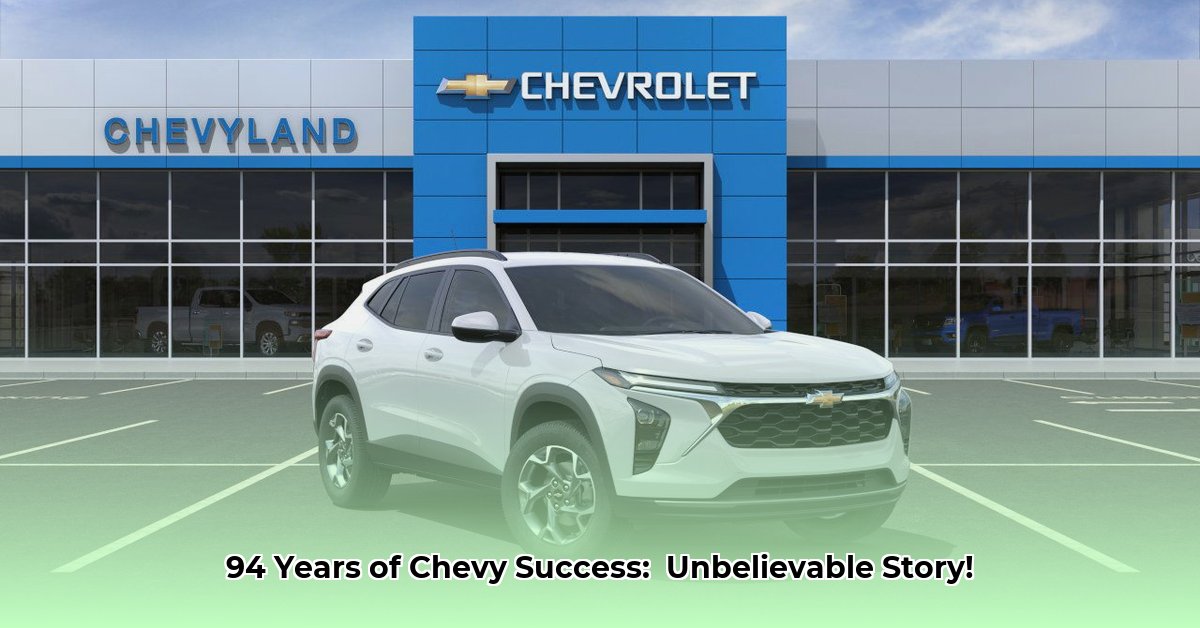
A Century of Service: Chevyland Bossier's Enduring Success
Chevyland Bossier, a family-owned dealership located in Bossier City, Louisiana, has thrived for nearly 94 years. This case study examines the factors contributing to its remarkable longevity, analyzing its operational strategies, identifying data gaps, and offering actionable recommendations for continued success. The central question explored is: How has Chevyland Bossier maintained its success for nearly a century in the competitive Bossier City automotive market?
Background: A Deep-Rooted Local Institution
Established in 1931, Chevyland Bossier has witnessed significant transformations in the automotive industry. Its success stems from a multifaceted approach, encompassing a strategic location, diversified product offerings, and a strong commitment to community engagement. The dealership's prime location along I-20 provides high visibility and accessibility, attracting customers from a wide geographic area. This strategic advantage has been a consistent driver of business throughout its history. Furthermore, Chevyland Bossier's diversification beyond new and used vehicle sales into a thriving commercial vehicle division and robust service and parts department has created a resilient business model, mitigating the risks inherent in market fluctuations.
Analysis: Unpacking Chevyland's Strengths and Data Gaps
Chevyland Bossier's success is evident, but a complete picture requires additional data. Currently, there's a lack of publicly available information regarding its financial performance, customer satisfaction metrics, and detailed competitive analysis. This absence limits a full assessment of its market position and operational efficiency. The absence of detailed financial data prevents a precise quantification of its profitability and return on investment (ROI) across different business segments. Similarly, the lack of customer satisfaction data hampers a precise understanding of customer perception, loyalty, and potential areas needing improvement. Finally, a comprehensive competitive analysis is lacking, which could reveal specific competitive strengths and weaknesses.
The Family-Owned Advantage (and Challenges)
Operating as a family-owned business presents both advantages and challenges. The family-centric approach fosters a strong internal culture and long-term vision; however, potential challenges arise in areas such as succession planning and securing capital for large-scale investments. Future success hinges on the effective balancing of tradition and adaptation to modern business dynamics.
The Digital Divide: A Critical Opportunity
A significant data gap lies in the dealership's online presence. Currently, a lack of detailed information suggests an underdeveloped digital marketing strategy. In today's competitive landscape, a robust online presence is crucial for attracting new customers and fostering brand loyalty. A sophisticated digital marketing strategy, incorporating search engine optimization (SEO), social media marketing, and targeted advertising campaigns, is an essential pathway for future growth. The untapped potential in digital marketing represents a critical opportunity for expansion and increased market share. Without a substantial online presence, Chevyland Bossier risks losing out to competitors who effectively leverage digital channels.
Discussion and Recommendations: A Roadmap for Continued Success
Addressing the identified data gaps and leveraging existing strengths requires a strategic, multi-pronged approach. The following recommendations are categorized for clarity and actionability:
1. Enhance Data Collection and Analysis: Implement comprehensive data collection mechanisms to gain insights into financial performance, customer satisfaction, and competitive positioning. This includes detailed financial reporting, customer feedback surveys, and a thorough competitive market analysis. The enhanced data will allow for evidence-based decision-making and strategic planning.
2. Strengthen Digital Marketing: Develop a comprehensive digital marketing strategy encompassing a modern, user-friendly website, active social media engagement, and targeted online advertising. For example, targeted advertising through Google Ads, focused on geographical demographics and customer interests, could significantly boost visibility and customer acquisition. This step is critical to closing the digital gap and expanding the customer reach.
3. Optimize Operations and Service: Invest in employee training and development, continuously evaluating operational efficiency. Explore potential workflow improvements and explore service packages tailored to customer needs. Data gathered from customer satisfaction surveys will inform enhancements to the operational framework.
4. Succession Planning and Financial Management: Formalize succession planning to ensure the continued smooth operation of the family business. Implement rigorous financial controls and reporting systems to maintain transparency and support evidence-based strategic decision-making.
5. Community Engagement and Brand Building: Strengthen existing community engagement strategies. Expand outreach initiatives, aligning them with local events and needs. This will enhance the dealership's reputation and foster brand loyalty (which also leads to repeat business).
Conclusion: A Future Forged in Tradition and Innovation
Chevyland Bossier's longevity is a testament to its adaptability and commitment to its customer base. By systematically addressing the identified data gaps and implementing the recommended strategies, the dealership can capitalize on its strengths and ensure continued success in the evolving automotive industry. The future of Chevyland Bossier hinges on successfully integrating tradition with data-driven innovation, effectively leveraging digital channels, and maintaining its strong local presence. The dealership's long-term success depends on continued commitment to understanding emerging market trends, customer preferences, and the effective implementation of strategies that bridge the gap between the traditional and the digital.